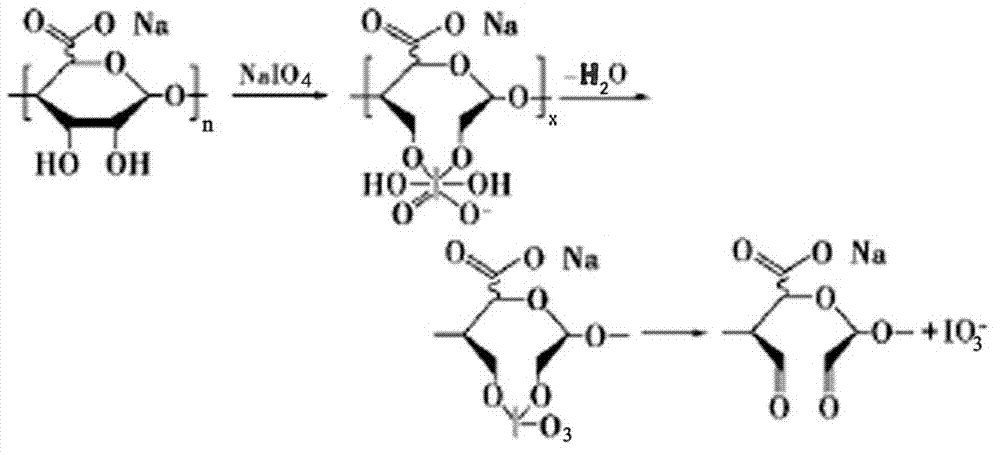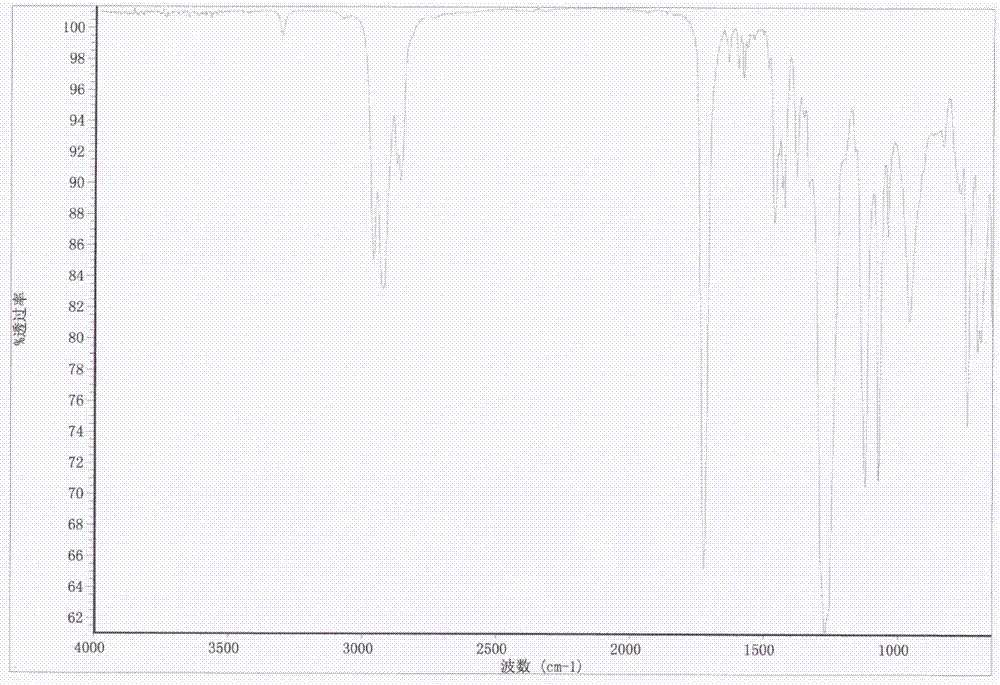Preparation method and application of dexamethasone sodium phosphate-sodium alga acid composite slow-release coating
A technology of dexamethasone sodium phosphate and sodium alginate, which can be applied in the directions of coatings, packaging items, special packaging items, etc., can solve the problems of poor biocompatibility, poor anticoagulation activity, and systemic inflammatory response, and achieve improved degradation. Performance, anti-shock effect, good biocompatibility
- Summary
- Abstract
- Description
- Claims
- Application Information
AI Technical Summary
Problems solved by technology
Method used
Image
Examples
Embodiment 1
[0029] In the first step, 0.344 g of potassium permanganate was dissolved in 162 ml of deionized water, and 10 ml of 95 wt % concentrated sulfuric acid was slowly added to mix the concentrated sulfuric acid and potassium permanganate evenly.
[0030] In the second step, the polymer material PVC is added to the solution obtained in the first step, and the reaction is fully carried out by mechanical stirring for 10 minutes at a temperature of 20°C; after the reaction, the material is cleaned with deionized water.
[0031] In the third step, the polymer material pretreated in the second step is immersed in a 0.01wt% polyethyleneimine aqueous solution, and reacted at room temperature at 20° C. for 60 minutes to obtain an amination-modified surface.
[0032] The fourth step is to oxidize the alginic acid according to the molar ratio of sodium periodate to sodium alginate unit of 1:10, so that the end of the alginic acid fragment is exposed to aldehyde groups, ethylene glycol terminate...
Embodiment 2
[0036] In the first step, dissolve 0.328 g of potassium permanganate in 144 ml of deionized water, slowly add 20 ml of 95% concentrated sulfuric acid, so that the concentrated sulfuric acid and potassium permanganate are well mixed.
[0037] In the second step, the polymer material was added to the solution obtained in step 1, and ultrasonically stirred for 1 min to fully react at a temperature of 25°C; after the reaction, the material was cleaned with deionized water.
[0038] In the third step, the polymer material pretreated in the second step is immersed in a 0.5wt% polyethyleneimine aqueous solution, and reacted at room temperature at 25° C. for 10 minutes to obtain an amination-modified surface.
[0039] The fourth step is to oxidize the alginic acid according to the molar ratio of sodium periodate to sodium alginate unit 3:10, so that the end of the alginic acid fragment is exposed to aldehyde groups, ethylene glycol terminates the reaction, 96wt% ethanol aqueous solutio...
Embodiment 3
[0043] In the first step, dissolve 0.328 g of potassium permanganate in 144 ml of deionized water, slowly add 20 ml of 95% concentrated sulfuric acid, so that the concentrated sulfuric acid and potassium permanganate are well mixed.
[0044] In the second step, the polymer material was added to the solution obtained in the first step, and the reaction was fully performed by ultrasonic stirring for 8 minutes at a temperature of 25°C; after the reaction, the material was cleaned with deionized water.
[0045] In the third step, the polymer material pretreated in the second step is immersed in a 0.05wt% polyethyleneimine aqueous solution, and reacted at room temperature at 25° C. for 30 minutes to obtain an amination-modified surface.
[0046] The fourth step is to oxidize the alginic acid according to the molar ratio of sodium periodate to sodium alginate unit of 1:10, so that the end of the alginic acid fragment is exposed to aldehyde groups, ethylene glycol terminates the react...
PUM
 Login to View More
Login to View More Abstract
Description
Claims
Application Information
 Login to View More
Login to View More - R&D
- Intellectual Property
- Life Sciences
- Materials
- Tech Scout
- Unparalleled Data Quality
- Higher Quality Content
- 60% Fewer Hallucinations
Browse by: Latest US Patents, China's latest patents, Technical Efficacy Thesaurus, Application Domain, Technology Topic, Popular Technical Reports.
© 2025 PatSnap. All rights reserved.Legal|Privacy policy|Modern Slavery Act Transparency Statement|Sitemap|About US| Contact US: help@patsnap.com



